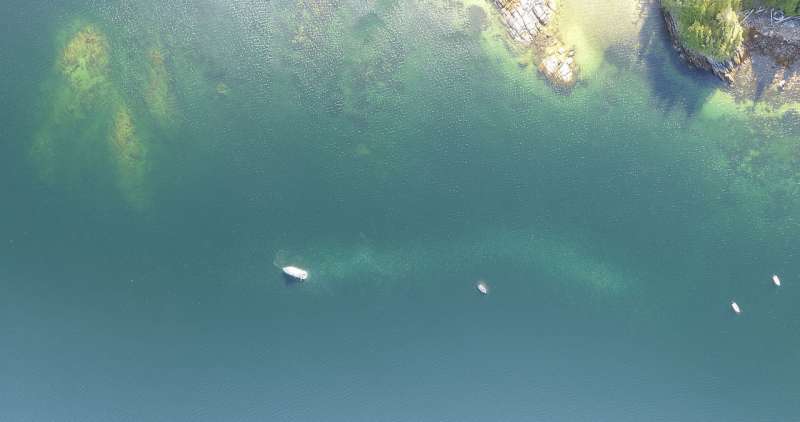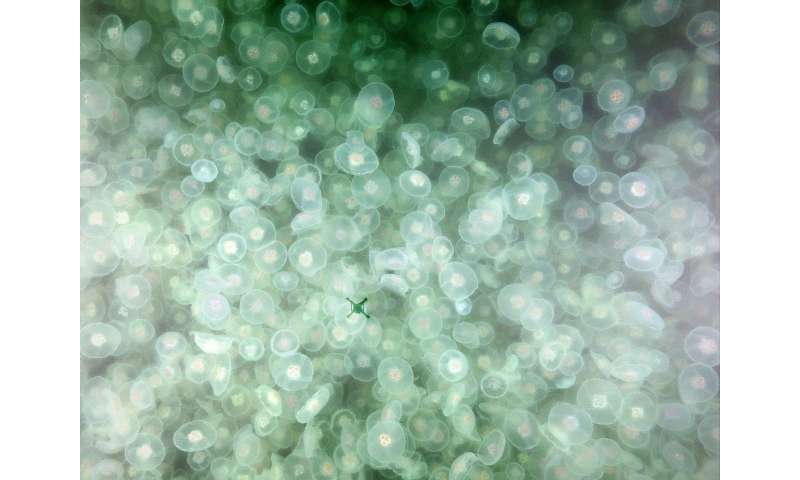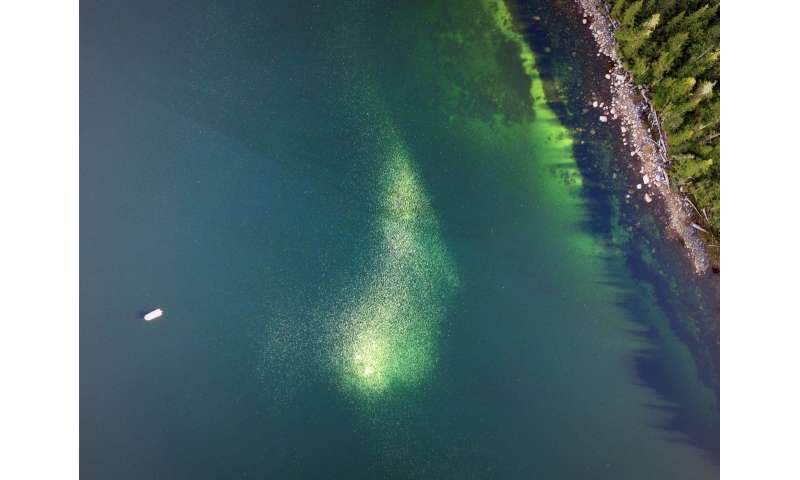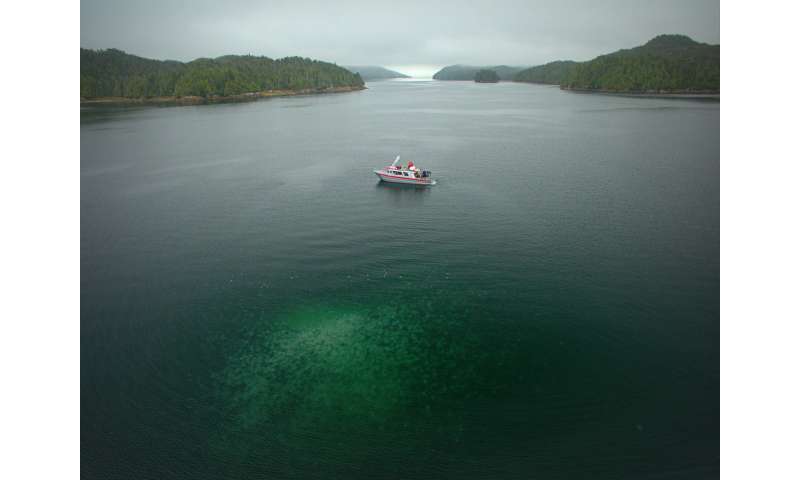UBC researchers use drones to track jellyfish blooms

Jellyfish blooms are becoming more widespread and scientists are looking for ways to understand them better, including their impact on species like salmon that compete with them for food sources. Now, researchers at the University of British Columbia have enlisted aerial drones to track these jellyfish clusters, their behaviours, and populations in greater detail.
In this Q&A, researchers Brian Hunt, the UBC Hakai professor in oceanography, and faculty of science undergraduate student Jessica Schaub talk about what they've found so far with the aid of their aerial tools.
Why is it important to study jellyfish?
Brian Hunt: Jellyfish can compete with some species of salmon for food. They can also affect herring. Herring spawn in springtime and while jellyfish generally don't bloom at that time, with warming ocean conditions the jellyfish could be starting to proliferate earlier in the season. We've seen one B.C. study that reported up to 95 per cent of herring larvae were eaten by jellyfish. That could hugely impact the ecology of this area.
It would also be interesting to study how jellyfish contribute to the food web, perhaps in ways we haven't anticipated.
Why use drones to study these jellyfish populations?
Hunt: Evgeny Pakhomov (director of UBC's Institute for the Oceans and Fisheries), and I work closely with the Hakai Institute, which has a research station in Pruth Bay, off Calvert Island. Summer blooms of moon jellyfish seemed to be growing in size near the station. Hakai has been pioneering the use of drones to tackle research problems. It occurred to us that they may be a fantastic tool for mapping the extent and behaviour of jellyfish aggregations, something which is very difficult to do from a boat.

Jessica Schaub: It's the first time drones have been used to study jellyfish in this location. In addition to using boats, researchers have used cameras on small aircraft to observe marine life, but that's expensive and you don't get good-resolution images. Drones are much more cost-effective and they can fly low, close to the surface, and produce high-quality images. We used them to zoom in and out to capture details or overall patterns.
What have you observed so far?
b>Schaub: For the first time, we have very clear and detailed pictures of how jellyfish clusters move, how they behave when freshwater from rivers enters the system, and how they use ocean currents to stay together. But what's really exciting is we obtained a good estimates of the total mass of jellyfish aggregations in the area – 60 to 120 tonnes of wet weight. That's a huge amount and it provides a starting point for further studies on jellyfish energy demands and their effect on the local food web.
Hunt: We noticed a marked increase in the number of moon jellyfish (Aurelia aurita) in 2015 and 2016. That's the most common species we found. These years also stood out for the number of warm-water gelatinous plankton groups, including sea squirts, that we found.
In 2017 we saw a decrease in jellyfish around Calvert Island, though warm-water pyrosomes—tube-like animals—were abundant. Remember, 2015 was when we saw the warm-water "blob" on the B.C. coast, and this was followed by an El Nino event in 2016. These combined events may explain the increase in jellyfish numbers that we saw in those years, while the cooler waters in 2017 may have had a negative effect on their biomass.
-

Credit: Keith Holmes, Hakai Institute -

Credit: Keith Holmes, Hakai Institute -

Credit: Keith Holmes, Hakai Institute -

Credit: Keith Holmes, Hakai Institute
Provided by University of British Columbia



















